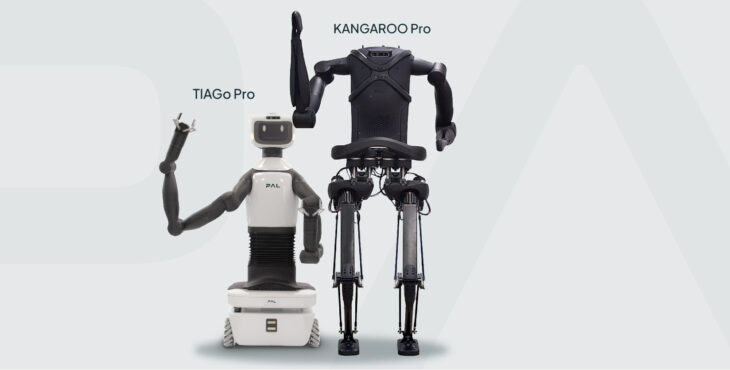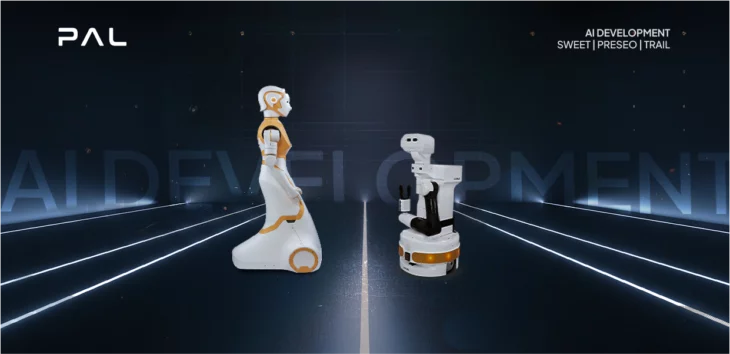Professor Torras talks with us
CSIC Research Professor at the Institut de Robòtica i Informàtica Industrial in Barcelona, Carme Torras Genís, is known for her distinguished career and has won a number of awards for her work. This includes, most recently, the “Julio Rey Pastor” National Research Award in 2020, which Professor Torras received for her pioneering contributions in intelligent robotics and social robotics, highlighting the contribution that her scientific activity has made to the progress of technology and society.
Of other awards and prizes received, some of the most prestigious include the Narcís Monturiol Medal of the Generalitat de Catalunya, Catalan ICT Professional of the year, the DonaTIC Award, and the Julio Peláez Award for pioneering work in applied mathematics from the Tatiana Pérez de Guzmán el Bueno Foundation.
As a leader and contributor to various European Research projects, her robotics research has tackled numerous problems published in a wide range of journals, particularly around learning and decision making, and healthcare and rehabilitation.
Since 1997 Professor Torras has led a research group on Assistive Robotics and Artificial Intelligence at the Institut de Robòtica i Informàtica Industrial (CSIC-UPC) in Barcelona. Carme Torras is Vice President of CSIC’s Ethics Committee and a member of UPC’s Ethics Committee and the Observatory of Ethics in AI of Catalonia. Professor Torras’ interests include the connection between robotics and artificial intelligence, having written several novels in the area.
She is an IEEE Fellow, EurAI Fellow, a member of Academia Europaea, member of the Reial Acadèmia de Ciències i Arts de Barcelona, and she was Editor of the IEEE Transactions on Robotics. We had the chance to talk with Professor Torras on her career to date, and on her research projects with one of her platforms of choice, meaning the mobile manipulator robot TIAGo.
“What inspired you to start a career in robotics, was it your childhood dream or an interest that you developed later?”
Carme Torras told us, “as a student it was difficult to choose between sciences and humanities, however at university I found a solution by enrolling in both Mathematics at UB (University of Barcelona) and Philosophy and the Humanities at UNED (Open University).”
She added, “I was interested in the processes of shaping thought, intelligence, emotion within the brain and, after graduating, when I worked for an IT firm, I read a few books on Artificial Intelligence (AI) by renowned researchers, one of which really stood out for me, “Brains, machines and mathematics” by Michael A. Arbib. I wrote him to say that I would love to study what he explained in his book and he wrote back and invited me to study the Computer Science Master’s degree, at the University of Massachusetts, specialising in Brain Theory.”
Professor Torras continued, explaining how she continued her interest in brain theory – “after moving into robotics, I applied biologically-inspired models to perception, planning, reasoning, movement control and most importantly, to automatic learning implemented in robots.”
“What type of research do you work on at the Robotics Institute in Barcelona?”
Professor Torras told us more about her work at the Robotics Institute in Barcelona, “since 1997 I have led a research group on Assistive Robotics and Artificial Intelligence at the Institut de Robòtica i Informàtica Industrial (CSIC-UPC), which now has more than 50 members.”
“In our assisted living facility, consisting of a living room and a bedroom, our team can test robots in real-life situations. Our research focuses on collaborative and assistive robotics and we develop methods and algorithms to enable robots to act more intelligently during care tasks: helping people to dress, and support in feeding tasks are examples of this.”
The Barcelona-based Institut de Robòtica i Informàtica Industrial is a joint research centre of the Spanish National Research Council (CSIC) and the Technical University of Catalonia (UPC). The institute has 4 research groups: Robot Perception and Manipulation, led by Carme Torras, Kinematics and Robot Design, Automatic Control, and Mobile Robotics and Intelligent Systems.
“Which elements of your work in robotics are the most rewarding for you?”
Professor Torras explained, “one element of my work that is particularly rewarding to me is leading the research group, Robotised Perception and Manipulation at the Institut de Robòtica i Informàtica Industrial, and supervising PhD students. Some of my former students are now outstanding researchers in prestigious institutions, and others hold important positions in leading technology companies. It’s very fulfilling for me to see them grow as individuals as well as to help the field of robotics progress ethically at the same time.”
She added, “we have an exciting future ahead regarding assistive AI- robots that are here to help, so we should decide on the roles for humans and robots in the future.”
“What are the aims of European research projects you coordinate and/or are an investigator in: especially CLOTHILDE, I-DRESS and SOCRATES?”
Professor Torras told us more about the projects, “the pioneering CLOTHILDE (Cloth Manipulation Learning from Demonstration) project was granted by the European Research Council (ERC). The project aim is to establish the foundations of robotic versatile handling of textiles.”
She continued, “a lot of research in robot manipulation is carried out with rigid objects, and we believe it is essential to deal with deformable objects such as clothes and textiles, as these are commonly used in assistive and healthcare environments”
“In this project the applications are:
- Housekeeping and hospital logistics
- Automation in the clothing industry
- Increasing autonomy of older people and people with disabilities.
The aim in all of these areas is human-robot collaboration, as opposed to hard automation. For these technologies to be a success, it’s essential that they are safe and can be used by non-experts with little training, they also must be able to collaborate with people and to some extent, assess a human’s goals and intentions. In this project one of the robots we use is TIAGo for the robot’s manipulation abilities. Specifically, the robot fits our need to work with different types of objects including rigid ones and cloth.”
“SOCRATES is another European research project aimed at developing social robots in order to assist in caring for older people, including activities such as brain training games designed to assist people with Alzheimer’s disease or mild dementia.”
Carme Torras added, “I-DRESS aims to develop a system that will provide assistance in dressing to users with reduced mobility. Again, we use TIAGo here in our research as the robot is flexible enough to take part in a variety of different types of projects in our lab.”
 “Which challenges have you faced in these European research projects and how have you overcome them?”
“Which challenges have you faced in these European research projects and how have you overcome them?”
Professor Torras told us, “a major challenge for the future is to establish a reference centre in healthcare technologies, this would include the efforts of all the groups involved, from medical and technological research to healthcare, social and business. This centre would serve the entities that develop tools and strategies to improve the assistive capacity of the healthcare system. It would enable them to demonstrate the use of technology in helping to improve people’s lives.”
“What is TIAGo robot’s role in these projects and which TIAGo features have been especially useful in general?”
TIAGo takes part in projects at the Institut de Robòtica i Informàtica Industrial, specifically at the Assisted Living Lab. Carme Torras explained, “TIAGo’s manipulation abilities and the support we readily get from PAL Robotics have been essential in the research projects that the robot takes part in, for example CLOTHILDE, and I-DRESS.”
“We have also worked with TIAGo in producing a number of research papers, an example is, ‘Short-Term Human-Robot Interaction Adaptability in Real-world Environments’ in this work, a Cognitive System that relies on planning is extended with adaptive capabilities and embedded in a TIAGo robot.”
Professor Torras continued, “I like to highlight our papers reporting experiments with different types of users at fairs, nursing homes and healthcare facilities. TIAGo is especially appropriate for this type of user studies, since the robot attracts people of all ages, who enjoy interacting with it. Every time we have taken the robot to a field study, it’s been a great success!
She also uses PAL Robotics’ TIAGo robots to work cooperatively between themselves – two TIAGo robots work together in coordinated manipulation of tasks involving large cloth items, such as laying a tablecloth, contrasting from the bi-manipulator tasks that TIAGo often carries out working as a solo robot with researchers. The use of two coordinated TIAGo robots together increases the manipulation workspace even more.
“How much of a role does ethics play in social robotics and how do you see this evolving in the future?”
Carme Torras shared her views, “an essential first step is education and dissemination of information – people must be aware of the benefits and risks of AI.” Professor Torras continued, “as an example, the ACM/IEEE Computer Science Curriculum consists of 18 knowledge areas, one of which is ‘Social Issues and Professional Practice’ that includes courses on ethics in technology, professional ethics, and society and technology.”
She also explained more about the use of science fiction in education, “science fiction stories, movies and series are increasingly used for education to help engage students on the topic of Techno-ethics.”
“How has your research in social robotics to date inspired your work as a writer and novelist?”
Professor Torras told us more about her work as a writer and novelist, “the science fiction novels I have written have also been a very rewarding experience – they are connected to robotics and AI and their social implications, as I strongly believe that science fiction is a platform to encourage ethical debate on new technologies and their applications.
My novels are “La mutación sentimental” (Editorial Milenio, 2012) and “Enxarxats” (Males Herbes, 2017). The former was translated into English as “The Vestigial Heart” (MIT Press, 2018).”
Professor Torras has also developed related materials for schools and universities to encourage debate.
“How does science fiction play a role in social robotics and AI debate?”
Professor Torras told us, “digital technologies have become part of our everyday lives and are increasingly becoming go in-betweens in the workplace and in our personal relationships.”
“The research community in AI sees the need to work with social scientists, lawyers, psychologists, philosophers and anthropologists in order to be able to examine the ethical and social implications of these new technologies.”
“Additionally, for many years science fiction has been a strong source of inspiration for scientists, to envisage future possibilities of what may become real. In recent years, many initiatives to connect science fiction writers and film producers with scientists and technologists have arisen.”
“Which challenges do you imagine that robotics will face for the next 10 years?”
Professor Torras shared her views, “there are very exciting challenges in human-robot collaboration, an example of this is shared decision-making and control, as well as explainability of robot behaviours, robot situatedness, and customization through learning from interaction so that the robot adapts to the preferences and abilities of each particular user.”
“We need ethics for the digital age. It requires two things: regulation and training. The first is in the hands of governments and international institutions such as the European Commission, among others. The second is essential and necessary for all. We must train in technology and ethics politicians, citizens, young people, and also the engineers and digital professionals who develop technological innovations.”
We would like to thank Carme Torras for taking the time to talk with us. To learn about the capabilities of our research robot TIAGo take a look at PAL Robotics’ website. Finally, if you would like to ask us more about TIAGo as a research platform, do not hesitate to get in touch with us.


